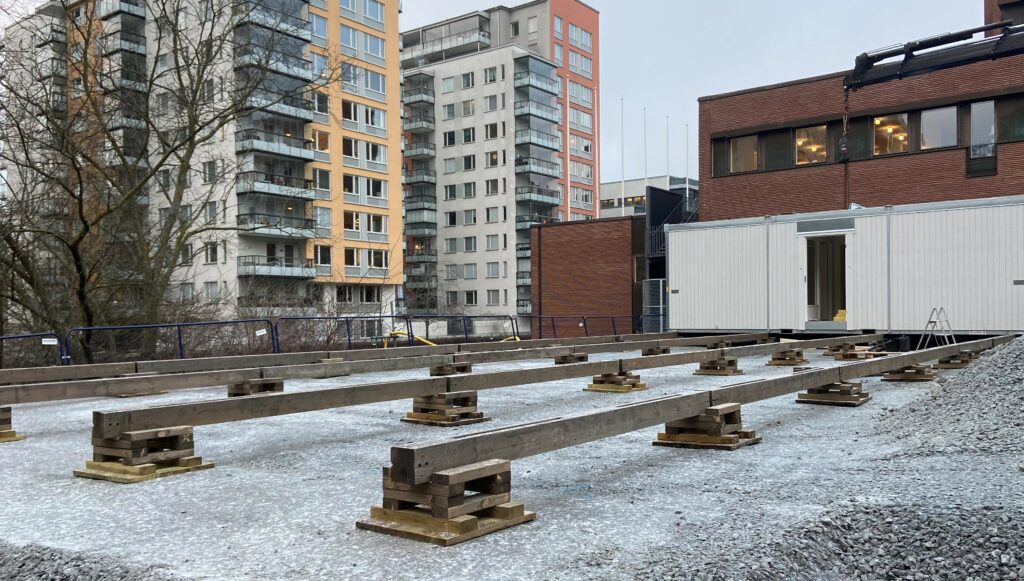Theme: Portacabins
2023.02.01

A traditional portacabin is often heated with electricity. Presume that there are roughly 40,000 portacabins in Sweden, with an average annual electricity consumption of 6,000 kWh*. Then, we are talking about a relatively large annual consumption on a national level – or up to 0,2 TWh. This is a good example for applying the principle ‘many small streams.’
In one of the blogs last year, Theme Energy, we explained some of the reasoning behind our energy strategy for Greenhouse Sthlm. In order to make a real difference when it comes to reducing CO2 emissions, it is not enough to only focus on the actual energy consumption. It is equally important to understand and take in to account the difference between high-grade and low-grade energy, and when in time the energy is consumed. Since this blog was published, this issue has received a lot of media attention, both in relation to the overall availability of electricity and the risk of unplanned energy shortages but also in relation to the cost of electricity.
This was our starting point when we were to make a decision for the 18 cabins that were to be used by the building workers while working to realize Greenhouse Sthlm.
After calculations back and forth, where we tested a number of scenarios coupled to the electricity price, we realized that the added one-time cost to equip the portacabins with water-borne heat and warm water from the main building, which is hooked up to the Stockholm district heating network, could be counted home. Energy-wise, the re-fitted cabins will consume around 2,900 kWh a year, of which 60% for heating while the rest will be electricity consumption for computers, cooking, making coffee etcetera.
Now the work is in full swing and 18 low-energy portacabins are being installed in the neighborhood. The energy consumption will be measured and tracked for the duration of the production period. Thanks Wangeskog Hyrcenter for setting high targets for climate-smart solutions, and for your experience and knowledge which helped us to achieve this!
All in all:
- Below average energy consumption – check
- Low-grade energy is used for heating and warm water – check
- We don’t burden the electricity network more than necessary which means we contribute to keeping energy prices down and to avoid the risk of energy shortages – check
- Climate-smart – check
Making conscious decisions together can really make a difference!
*The average has been computed based on an assumption that it falls somewhere between the consumption of older, not energy-efficient cabins, and newer more efficient ones. (The figures are from Svensk Byggtjänst).